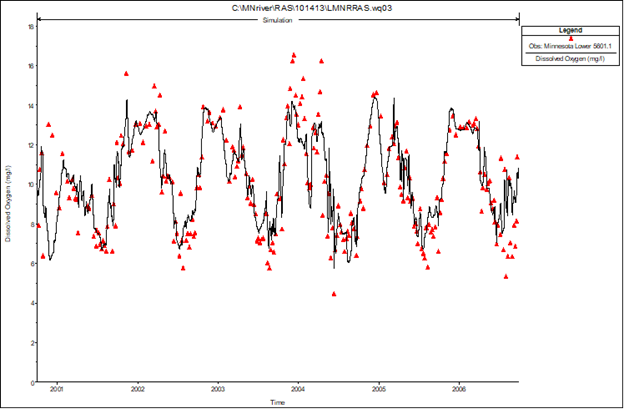HEC-RAS Water Quality
Four water quality modules (Temperature, GCSM, NSMI, NSMII) have been integrated into HEC-RAS for performing water quality analysis. The one-dimensional (1D) HEC-RAS water quality modeling capabilities have
been used to support studies for Total Maximum Daily Load (TMDL) analysis, military installations, and environmental impact studies. Recent studies include the Columbia-Snake River watershed, Missouri River,
lower Minnesota River, Calleguas Creek, and the Patuxent River.
Modeled and observed dissolved oxygen, Lower Minnesota River HEC-RAS water quality model.

The new water quality capabilities are available in HEC-RAS Version 6.
Contacts
ERDC POC:
Dr. Todd Steissberg
Phone: 530-219-7990
Email: Todd.E.Steissberg@usace.army.mil
HEC POC:
Mr. Mark Jensen
Phone: 530-756-1104
Email: Mark.Jensen@usace.army.mil
Last Updated: Sep 19, 2024